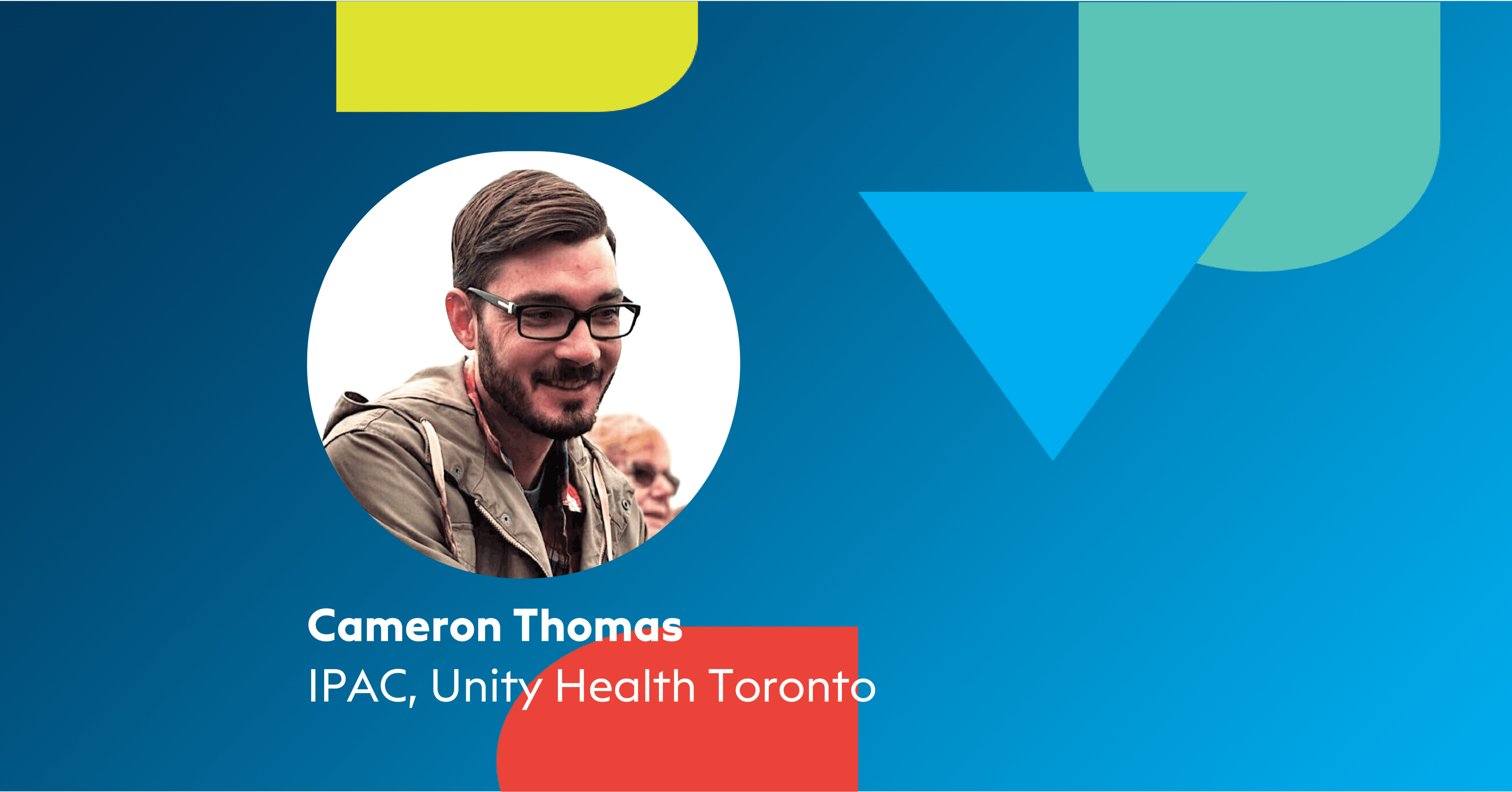Today, infection preventionists (IPs) are more important than ever. With the COVID-19 pandemic and other infections on the rise, hospitals are seeing the crucial role that IPs play in eliminating hospital acquired infections (HAIs).
In working with healthcare workers, IPs can reduce HAIs by 30%.¹
These results are produced in a team effort, with IPs as the backbone.
It’s time to recognize their outstanding efforts. We’ve asked Cameron Thomas, an IPAC Specialist at Unity Health Toronto, to share his story as an IP.
How did you become an IP? What drew you to a career in infection control?
I didn’t exactly take a traditional route to IPAC. I grew up wanting to be a teacher but changed course while living in Ethiopia with my wife. I was teaching English at Jimma University and spent time touring the local hospital with both local and expat physicians who were working there. Each shared their concerns regarding preventable infections that occurred in the hospital but didn’t have the resources for prevention. Upon returning to Canada I volunteered at a hospital in Toronto to conduct hand hygiene audits and learn from the IPAC team. With my toe in the IPAC water, I committed to pursuing the necessary education and immersed myself in the world of infection control.
Tell us about an average week of your role as an IP. What kind of tasks do you do?
Every day starts with patient assessments and surveillance. This is the most interesting part of the job – playing detective and reviewing patient charts and working with the clinical team to ensure that patients are taking appropriate additional precautions. As well as promptly discontinuing additional precautions as soon as no longer necessary.
After that, I visit my floors to observe practices, review the environment, speak with clinical staff about their IPAC related concerns and questions, and provide in-service educational sessions. I generally work on projects related to education, changes in practice, review of new products with environmental services, reporting on surveillance findings and compliance rates, outbreak management, etc.
What is the most rewarding part of your work? Anything challenging?
I firmly believe that we are keeping our patients, staff, and visitors safe. A lot of the work is behind the scenes but I do believe we make a difference.
I think one of the biggest challenges is the reputation of IPAC. We’re often viewed as the “hand hygiene police” which creates a barrier that makes collaboration more challenging. I try to spend as much time as I can with the clinical teams that I support to push beyond this reputation. The truth of the matter is, we (IPAC) provide recommendations based on best practices, which in turn are based on science and data.
That being said, IPAC is not one size fits all. If we make recommendations without engaging with the end user, we are almost guaranteeing that the change will fail. We have a responsibility to work with the clinicians to understand their workflow and make recommendations that can deliver the most impact in the real world.
The pandemic put an immense strain on the healthcare system, especially with challenges in infection control. How can healthcare workers and other front-line workers continue to work with IPs to help prevent HAIs?
Number one is to communicate your concerns. Front line workers are the people most familiar with the intricacies of the unit. IPAC audits will identify some gaps that can be improved but may not be aware of a subtle missed opportunity that the staff working in that environment have observed.
IPAC is truly a team sport and the best thing front-line workers can do is to communicate with their IPAC representative.
Otherwise, I think it’s important for people to think about the “why” for all IPAC recommendations, instead of trying to learn just the steps. When you think about what you touched last and what you’re touching next, it makes sense whether to clean your hands or not. If it’s still unclear: reach out! Chat with your IPAC person.
Where do you see the IPAC industry going in the future?
In the future I expect IPAC to become more efficient. With improved technology we can use more data to track compliance and provide feedback. Better disinfectants, improved surface cleaning methods, and updated infrastructure should all help in the fight to prevent transmission.
We all want to go back to pre-pandemic life, but I suspect we’ll never completely move away from some of the public health measures that have now become ubiquitous: masks (especially in healthcare) and social distancing. I will say it’s kind of nice to have some space around you while in line at the grocery store though.
A career in infection prevention creates a significant impact on keeping staff and patients safe. Especially during these difficult times, it is important to acknowledge the hard work of every IP.
It is also important to equip IPs with the necessary tools to make smarter, data-driven decisions for preventing infections. This includes adopting technology like hand hygiene monitoring tools and UV-C sanitizers, such as CleanSlate UV.
Upcoming Webinar
Interested in learning more? Join us for an upcoming webinar where we sit down with Cameron on November 02, 12:30pm EST to hear about lessons learned from the pandemic regarding infection control and hand hygiene
Register Now



